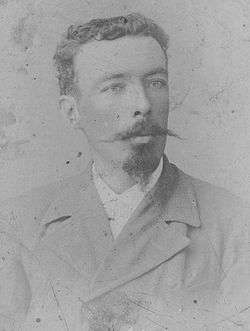Luis A. Martínez

Luis Alfredo Martínez Holguín (Ambato, June 23, 1869 – November 26, 1909) was an Ecuadorian writer, painter, politician, and agriculturist. He introduced Realism into Ecuadorian literature. He was an opponent of the government of Eloy Alfaro. He worked in different regions and at various jobs, from the humblest to the most prestigious, and knew about the life of the people, which allowed him to write his masterpiece, A la Costa (1904), one of Ecuador's first realist novels, describing faithfully the social changes taking place in his country in the late nineteenth century.
Besides his literary career, he fought against the liberal guerrillas in the 1890s, he managed the Valdez sugar mill, he was sub-secretary and minister of Education and promoted the construction of a railway between Ambato and the Ecuadorian Amazon, which could not be completed. He wrote a treatise on agriculture and one in defense of the indigenous people of Ecuador.
Martínez was also a painter. Some of his best paintings can be found outside of Ecuador. Two of his paintings are in the United States Library of Congress, two are in the Modern Art section of the Vatican Museum, and one is in Rio de Janeiro. During his lifetime he had an exposition in Buenos Aires to critical acclaim and one of his paintings was awarded Honorable Mention in a contest in Chicago.[1]
Martínez died on November 26, 1909, at the age of 40, and is buried at the Municipal Cemetery of Ambato.[2]
Personal
In 1896 Martínez married Rosario Mera Iturralde, the daughter of the writer Juan León Mera (1832–1894). They had two children, Blanca Martínez Mera de Tinajero, and Edmundo Martínez Mera.
Works
Books
- A la costa (1904)
- Disparates y caricaturas (1903)
- La Agricultura ecuatoriana (1903)
- "Catecismo de la agricultura"
- "Camino al Oriente"
Paintings
- Soledad Eterna
- Requiem